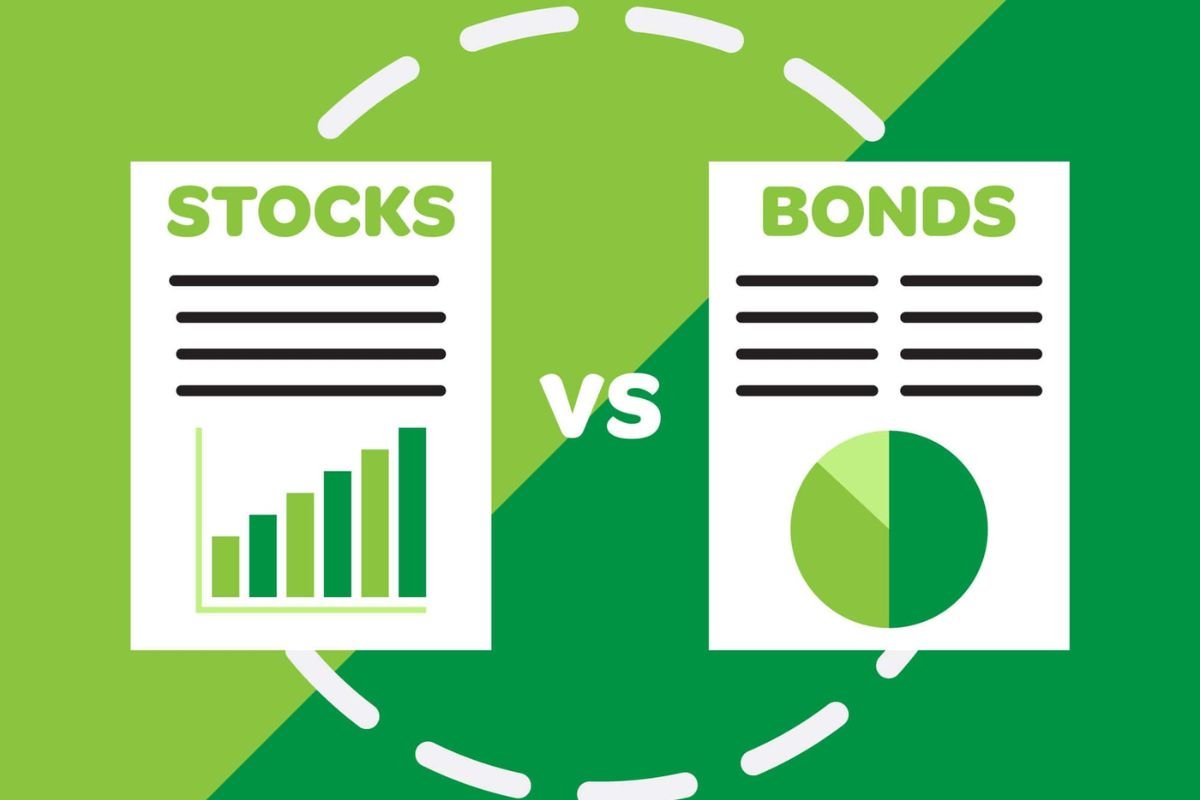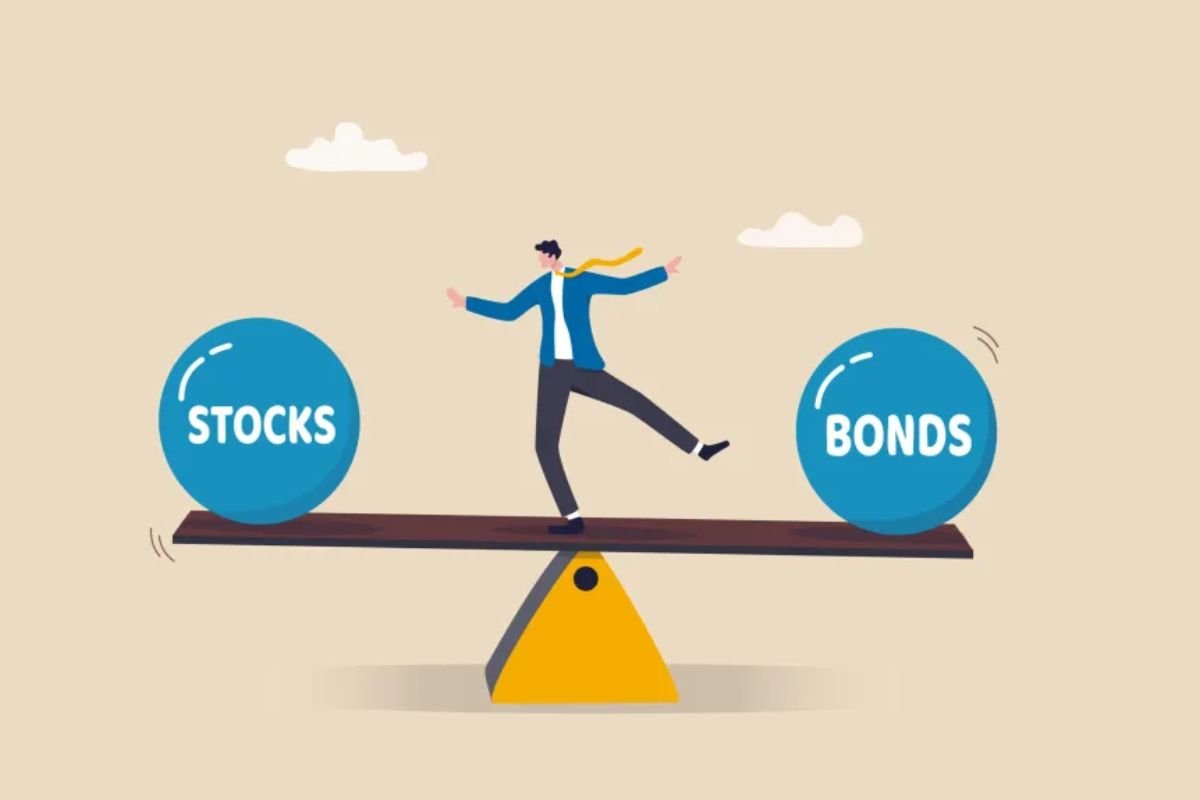Stocks and Bonds are the two of the most important asset classes, that are discussed in the world of investing. Inspite of distinctive financial purposes of these two components, stocks and bonds acts as essential parts of a diversified investment portfolio.
So it is very crucial for the investors, who is aiming to build wealth or generate passive income, while managing the risks effectively, to understand the difference between stocks and bonds before investing in it.
This article provides an indepth guide about the topic and also explores the characteristics, advantages, and risks associated with stocks and bonds to help investors in making an informed decision.
Understanding the Difference Between Stocks and Bonds and their Key Features
Stocks, also known as equities, represent ownership in a company. When an investor buys a stock, they acquire a share of the company’s ownership and, in return, gain certain rights, such as voting in shareholder meetings and receiving dividends (if applicable). Stocks are primarily traded on stock exchanges like the New York Stock Exchange (NYSE) or Nasdaq.
Key Features of Stocks:
- Ownership Rights: Shareholders own a portion of the company and can influence corporate decisions through voting rights.
- Capital Appreciation: Stock prices can increase over time, offering potential for significant returns.
- Dividends: Some companies distribute a portion of their profits to shareholders in the form of dividends.
- Market Volatility: Stock prices fluctuate frequently due to market conditions, company performance, and economic factors.
What Are Bonds?

Bonds, on the other hand, are debt securities issued by corporations, municipalities, or governments to raise capital. When an investor purchases a bond, they are essentially lending money to the issuer in exchange for periodic interest payments (coupon payments) and the return of the principal amount at maturity.
Key Features of Bonds:
- Fixed Income: Bonds provide regular interest payments, making them a stable income source.
- Lower Risk: Compared to stocks, bonds generally have lower risk and less price volatility.
- Maturity Date: Bonds come with a predetermined maturity period when the investor receives their initial investment back.
- Credit Ratings: Bond safety is assessed based on the issuer’s creditworthiness, with higher-rated bonds being less risky.
Key Differences Between Stocks and Bonds
While both stocks and bonds are investment instruments, their fundamental nature, risk level, and returns vary significantly. Below is a detailed comparison of the difference between stocks and bonds:
| Factor | Stocks | Bonds |
| Nature | Represents ownership in a company | Represents a loan to a company or government |
| Returns | Potential for high returns through price appreciation and dividends | Fixed returns through interest payments |
| Risk Level | Higher risk due to market volatility | Lower risk, but varies based on credit rating |
| Income Type | Variable returns based on market performance | Predictable income from interest payments |
| Maturity | No maturity date; can be held indefinitely | Fixed maturity date when the principal is repaid |
| Priority in Bankruptcy | Shareholders are last in line for payouts | Bondholders have a higher claim in case of liquidation |
Pros and Cons of Stocks and Bonds

Pros of Stocks:
- High Growth Potential: Stocks historically provide higher long-term returns than bonds.
- Liquidity: Stocks are easily tradable on exchanges, offering high liquidity.
- Ownership Benefits: Investors may receive dividends and gain voting rights in the company.
Cons of Stocks:
- High Volatility: Stock prices fluctuate frequently, making them riskier.
- No Guaranteed Returns: There is no assurance of dividends or capital appreciation.
- Market Sensitivity: Economic downturns can lead to significant losses.
Pros of Bonds:
- Stable Income: Bonds provide regular interest payments, ensuring a steady income.
- Lower Risk: Bonds, especially government and high-rated corporate bonds, are considered safer investments.
- Capital Preservation: Investors get their principal back upon maturity, reducing the risk of capital loss.
Cons of Bonds:
- Lower Returns: Bonds typically offer lower returns compared to stocks.
- Interest Rate Risk: Bond prices fluctuate based on changes in interest rates.
- Inflation Risk: Fixed interest payments may lose purchasing power due to inflation.
When to Invest in Stocks vs. Bonds?

Choosing between stocks and bonds depends on an investor’s financial goals, risk tolerance, and investment timeline. Here are some general guidelines:
Invest in Stocks if:
- You have a long investment horizon and can tolerate market fluctuations.
- You seek high potential returns and are comfortable with higher risk.
- You want to participate in a company’s growth and dividends.
Invest in Bonds if:
- You prefer stable, predictable returns with lower risk.
- You are close to retirement and need a reliable income stream.
- You want to diversify your portfolio to balance stock market risks.
Conclusion
Opting for stocks or bonds totally depends on an investor’s financial goals, risk tolerance, and investment timeline. However, it is crucial to understand the difference between stocks and bonds to make the right and informed investment decisions. Stocks offer higher returns but come with increased volatility, whereas bonds provide stability with fixed income but lower growth potential. Whether you are a risk-taker aiming for big gains or prefer a more cautious approach by prioritizing stability, balancing stocks and bonds with a deep understanding can help you achieve your financial goals.







